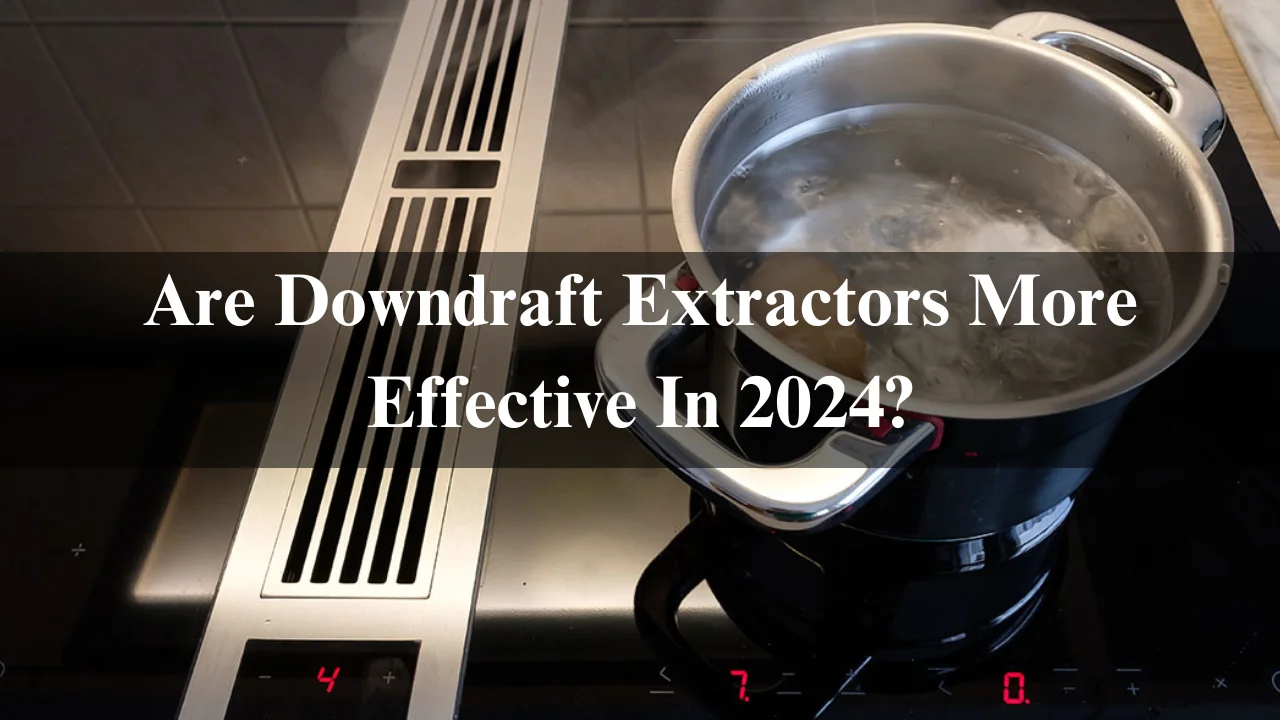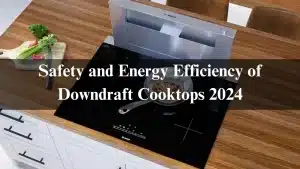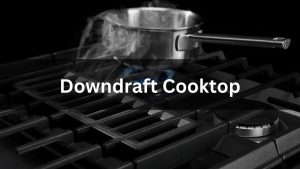When it comes to kitchen design, functionality often takes center stage. One of the hottest trends in modern kitchens is the downdraft extractor. Imagine cooking up a storm while all those pesky fumes and odors are whisked away discreetly. With technology advancing at lightning speed, many homeowners wonder: Are downdraft extractors more effective in 2024?
This post will dive into what makes these systems stand out in today’s culinary landscape. Whether you’re considering an upgrade or just curious about the latest innovations, you’ll discover why these sleek appliances might be your next best investment for a cleaner kitchen experience. Let’s get started!
Table of Contents
Why choose a downdraft extractor?
Choosing a downdraft extractor can be a game-changer for your kitchen. These sleek units seamlessly blend into your countertop, maintaining a minimalist aesthetic without sacrificing performance.
One of the standout benefits is their ability to capture smoke and odors at the source. Unlike traditional hoods that rely on suction from above, downdraft extractors pull air downwards, making them highly effective during cooking.
They also offer versatility in design. Whether you have an island or wall-mounted stove, these extractors fit beautifully into various layouts while maximizing space and functionality.
Noise levels are typically lower than those of standard range hoods. This means less disruption while enjoying time with family or entertaining friends in the kitchen.
Many models come equipped with advanced filtering systems that enhance air quality. Who wouldn’t want fresher air while whipping up delicious meals?
What Are Downdraft Extractors?
A type of kitchen ventilation system pulling air downwards instead of up, ideal for modern, open-concept kitchens. Designed to rise from the countertop when needed, providing unobtrusive and efficient smoke removal.

How Do They Work?
The key to a downdraft extractor’s function is its powerful fan that draws air downwards through a vent. This air is then either filtered and recirculated or expelled outside through ductwork. The fan speed and design determine how effectively the extractor can capture and eliminate cooking byproducts.
In easy words: Fan mechanism pulls air down through a vent, with options for either recirculating or ducting outside.
Types of Downdraft Extractors
- Integrated Downdrafts: Built into the cooktop, rising only when needed.
- Pop-up Downdrafts: Installed behind the cooktop and rise when activated.
- Retractable Downdrafts: Installed on the countertop and can retract when not in use.
Downdraft Extractors
Downdraft extractors offer a sleek and modern solution for kitchen ventilation. They can be installed directly behind or beside the cooktop, blending seamlessly into your countertop. This design not only saves space but also enhances the overall aesthetic of your kitchen.
One significant advantage is their efficiency in capturing smoke and odors at the source. Unlike traditional hoods that draw air from above, downdrafts pull contaminants downward, minimizing their spread throughout your cooking area.
Pros of Downdraft Extractors
- Fresh air: Captures odors and grease quickly for a cleaner atmosphere.
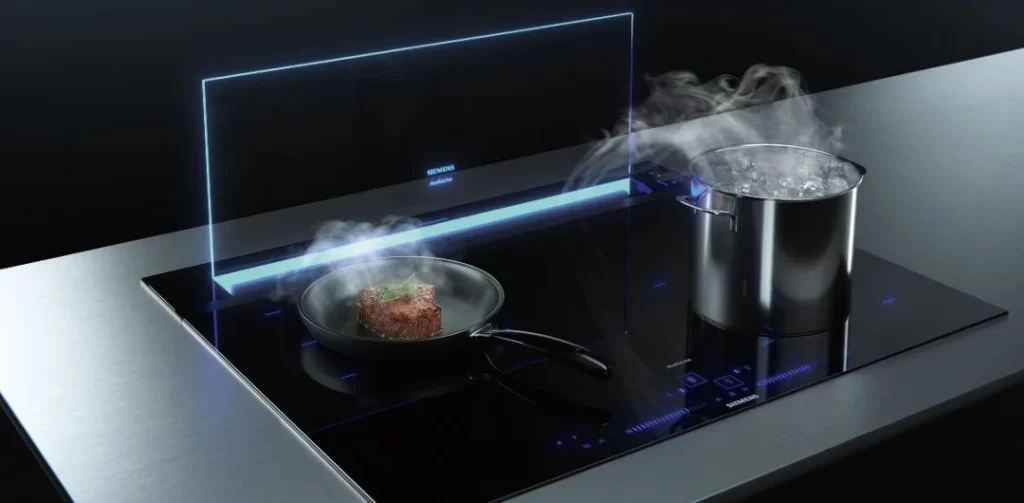
- Clear view: No overhead obstruction, allowing better sightlines.
- Silence: Quieter operation compared to overhead hoods.
- Easy to clean: Removable filters and surfaces that resist grease.

- Space-saving design: Retracts when not in use, maximizing counter space.
- Aesthetic appeal: Blends into various kitchen styles, adding a sleek, modern touch.
Cons of Downdraft Extractors
When considering downdraft extractors, it’s essential to weigh the drawbacks. One notable disadvantage is their installation cost. They often require professional help and specific kitchen layouts, which can be quite an investment.
Additionally, downdraft extractors may not be as powerful as traditional overhead hoods. While they are effective for smaller cooking tasks or light fumes, they might need more than heavy-duty frying or grilling. Users sometimes find that they need extra ventilation in these scenarios.
- Installation complexity: Requires precise kitchen layouts and may increase costs.
- Lower extraction power: Might struggle with larger pots and intense cooking tasks.
- Noise levels: Though generally quieter, certain models may produce noticeable sound.
- Maintenance: Regular cleaning and filter replacement are necessary.
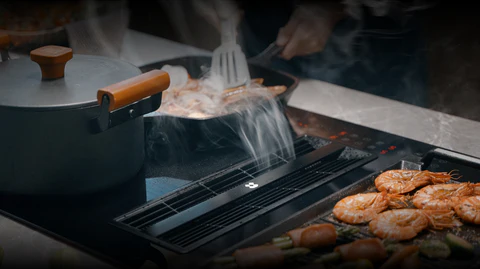
Technological Advancements in Downdraft Extractors (2024)
Improved Suction Power
In 2024, downdraft extractors have seen improvements in suction power, allowing them to capture more fumes, even from higher pots and pans. Enhanced motor technology has increased extraction rates without significantly raising energy consumption.
Smarter Air Filtration Systems
Modern downdraft extractors now feature more sophisticated filtration systems. These include multi-layered filters that capture grease, smoke, and odor particles more efficiently. Some models also offer automatic filter monitoring and replacement alerts.
Energy Efficiency Improvements
The latest downdraft extractors use energy more efficiently than older models. With optimized motor designs and better airflow control, they minimize energy waste, making them a more eco-friendly choice for homeowners.
Noise Reduction Technology
In the past, noise was a common complaint with downdraft extractors. New models incorporate advanced noise-canceling features, such as insulated housings and quieter fan blades. As a result, the noise levels in 2024 models are significantly lower, improving user comfort.
Are Downdraft Extractors More Effective in Open-Plan Kitchens?
Open-plan kitchens benefit from downdraft extractors due to their unobtrusive design and ability to maintain the room’s flow. The improved suction power in 2024 models makes them more effective in these layouts, where ventilation challenges are often greater due to the absence of walls to contain smoke and steam.
Comparison: Downdraft Extractors vs. Overhead Range Hoods
While both systems serve the same purpose, they differ in functionality and design:
- Performance: Overhead range hoods generally capture fumes more effectively, especially from taller cookware. However, downdraft extractors are closing the gap with better suction in 2024 models.
- Aesthetic: Downdraft extractors offer a cleaner, less obtrusive look compared to bulky overhead hoods.
- Installation: Downdraft extractors can be more complex to install, particularly in pre-existing kitchens.
- Cost: Downdraft extractors typically come with a higher upfront cost than overhead hoods but can offer long-term value.
Top Downdraft Extractor Brands in 2024
Several brands lead the market in downdraft extractor technology:
- Bosch: Known for its powerful extraction and quiet operation.
- Miele: Offers innovative designs with advanced filtration systems.
- Gaggenau: Premium models with sleek aesthetics and superior performance.
- KitchenAid: A more affordable option that still offers strong suction and reliability.
Customer Reviews and Satisfaction in 2024
Customer reviews for downdraft extractors in 2024 are generally positive. Users appreciate the space-saving design and quiet operation. However, some still note limitations with taller cookware and the higher price point.
Common Myths About Downdraft Extractors
- Myth: Downdraft extractors are less powerful than overhead hoods.
- Reality: While overhead hoods still hold the advantage, 2024 models of downdraft extractors have significantly improved, offering nearly comparable performance.
- Myth: Downdraft extractors are only suitable for island cooktops.
- Reality: They can be installed in a variety of kitchen layouts, though they do work especially well on islands.
- Myth: They are difficult to clean.
- Reality: Many 2024 models offer dishwasher-safe parts, making maintenance easier.
Related Articles:
Downdraft Cooktops Read All The Latest Pros And Cons 2024
Designing A Kitchen With A Downdraft Cooktop In 2024
Conclusion
While downdraft extractors made significant strides in 2024, offering improved design, efficiency, and flexibility, they still have certain limitations. Their sleek and modern aesthetic, quieter operation, and space-saving benefits make them attractive for many kitchens. However, their effectiveness can be compromised in certain cooking scenarios, particularly with large pots and high-intensity cooking.
Considering a downdraft extractor, weigh the pros and cons carefully. A downdraft extractor might be the perfect fit for smaller kitchens, open-concept designs, or those who value a minimalist look. However, a traditional overhead hood might still be better for serious cooks or those who frequently use large cookware.
Ultimately, the choice depends on your cooking habits, kitchen layout, and personal preferences. As with any kitchen appliance, it’s essential to consider how it fits into your daily routine and whether it will meet your needs.
FAQs
FAQs
Can downdraft extractors handle all types of cooking?
Downdraft extractors are best suited for light to moderate cooking. Due to their downward airflow design, they may need help with heavy frying or grilling.
Are downdraft extractors difficult to install?
Yes, installation can be complex and require modifications to your kitchen’s ductwork, electrical setup, and cabinetry.
Do downdraft extractors require more maintenance than range hoods?
Maintenance is generally comparable to traditional range hoods, though depending on the model and usage, filter replacement and cleaning may be more frequent.
Are downdraft extractors more expensive than traditional range hoods?
Typically, yes. Downdraft extractors tend to have higher initial costs and installation expenses, but depending on your kitchen’s needs, they can offer value in design and functionality.

